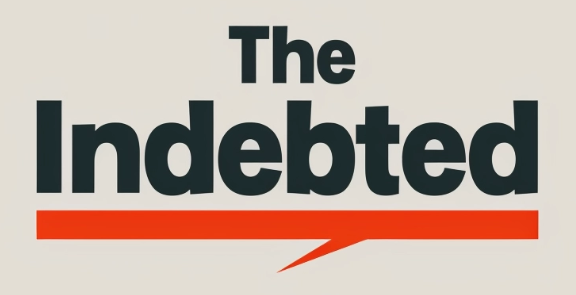The future of debt is a topic that has been on the minds of many individuals and businesses. As we enter a new era of economic uncertainty, it’s important to stay ahead of the trends and prepare for what’s to come. In this article, I will explore some of the emerging trends and technologies that are shaping the future of the debt industry, and how you can stay ahead of the curve.
One of the biggest trends to watch is the rise of digital debt management tools. With the increasing availability of online platforms and mobile apps, consumers are now able to manage their debt more efficiently and effectively than ever before. These tools can help individuals track their spending, set up payment reminders, and even negotiate with creditors to reduce their debt.
Another trend to watch is the growing importance of sustainability in debt management. As more and more consumers become aware of the impact of their financial decisions on the environment, there is a growing demand for sustainable debt management solutions. This includes everything from eco-friendly credit cards to debt consolidation programs that prioritize environmentally responsible investments.
By staying informed about these emerging trends and technologies, you can position yourself for success in the rapidly evolving world of debt management. Whether you’re an individual looking to get out of debt or a business looking to stay competitive, it’s important to stay ahead of the curve and embrace the future of debt.
Economic Context and Debt Evolution
As we look to the future of debt, it is important to understand the current economic context and how it has impacted debt evolution. The COVID-19 pandemic has had a significant impact on global debt, with debt levels reaching a record high of $281 trillion in 2020 [1]. In this section, I will explore the impact of the pandemic on global debt, private debt dynamics in a post-COVID world, and the role of governments and central banks.
Impact of the Pandemic on Global Debt
The pandemic has caused a global recession, resulting in a significant increase in debt levels. The pandemic has led to a decrease in global GDP, which has resulted in economic hardship for households and businesses alike. As a result, governments have had to increase spending to support their citizens and economies. This has led to a significant increase in public debt levels.
Private Debt Dynamics in a Post-COVID World
In addition to public debt, the pandemic has also had an impact on consumer debt. Many individuals have experienced financial hardship, which has resulted in an increase in consumer debt and a rise in foreclosures. However, some countries, such as China, have seen a decrease in consumer debt levels due to government policies aimed at reducing household debt.
The Role of Governments and Central Banks
Governments and central banks have played a crucial role in managing debt levels during the pandemic. Central banks have implemented monetary policies such as low-interest rates and quantitative easing to stimulate the economy and support financial markets. Governments have also implemented fiscal policies such as stimulus packages and increased spending to support their citizens and economies. However, these policies have led to a significant increase in public debt levels, which may have long-term consequences.
In conclusion, the COVID-19 pandemic has had a significant impact on global debt levels, resulting in an increase in both public and private debt. Governments and central banks have played a crucial role in managing debt levels during the pandemic, but the long-term consequences of these policies remain to be seen.
[1] IMF: Economic Growth After Debt Surges
Technological Advancements in Debt Management
As technology continues to advance, the debt management industry is undergoing a significant transformation. The introduction of new digital technologies such as Artificial Intelligence (AI), Machine Learning (ML), and Blockchain is changing the way debt collection agencies operate. In this section, I will discuss the technological advancements that are shaping the future of debt management.
AI and Machine Learning in Debt Collection
AI and ML are revolutionizing the debt collection industry by providing personalized strategies, enhanced accuracy, and improved efficiency. Debt collection agencies are now using AI and ML algorithms to analyze data and predict payment behavior. This technology can help identify the best time to contact a debtor, the most effective communication channel to use, and the optimal payment plan to offer. AI and ML can also help detect fraud and reduce the risk of non-payment.
Blockchain and Data Security Innovations
Blockchain technology is another technological advancement that is changing the debt management industry. Blockchain provides a secure and transparent way to store and share data. Debt collection agencies can use blockchain technology to securely store debtor information, payment histories, and other sensitive data. This technology can also help prevent identity theft and fraud.
The Rise of Digital Platforms and Omnichannel Strategies
Digital platforms and omnichannel communication strategies are also transforming the debt management industry. Debt collection agencies are now using digital platforms such as chatbots, mobile apps, and web portals to communicate with debtors. These digital platforms provide debtors with a convenient and secure way to make payments, view their account information, and communicate with the debt collection agency. Omnichannel communication strategies allow debt collection agencies to communicate with debtors through multiple channels such as email, text message, and social media.
In conclusion, technological advancements such as AI, ML, blockchain, and digital platforms are changing the debt management industry. Debt collection agencies that adopt these technologies will be better equipped to provide personalized solutions, improve efficiency, and enhance data security.
Operational Efficiency and Process Automation
As the landscape of debt collection continues to evolve, operational efficiency and process automation are becoming increasingly important. By automating manual tasks and collections, companies can streamline their processes and reduce costs. Advanced analytics can provide strategic decision-making capabilities, while virtual assistants and chatbots can enhance customer interaction.
Automating Manual Tasks and Collections
Automation can help with many manual tasks, including data entry, payment processing, and account updates. Debt collection is a process that can be particularly time-consuming and labor-intensive. By automating collections, companies can reduce the time and resources required to collect on unpaid debts. This can be achieved through the use of automated phone calls, text messages, and emails. By automating these tasks, companies can free up staff to focus on more complex tasks that require human attention.
Advanced Analytics for Strategic Decision Making
Advanced analytics can help companies make strategic decisions about debt collection. By analyzing data from past collections efforts, companies can identify trends and patterns that can inform future collections strategies. Analytics can also help companies identify high-risk accounts and prioritize collections efforts accordingly. By using advanced analytics, companies can make data-driven decisions that improve their collections efforts.
Virtual Assistants and Chatbots for Customer Interaction
Virtual assistants and chatbots can enhance customer interaction by providing quick and efficient responses to customer inquiries. Chatbots can help customers with simple tasks, such as account updates and payment processing. Virtual assistants can provide more complex assistance, such as debt counseling and financial planning. By using virtual assistants and chatbots, companies can provide a more personalized customer experience while reducing the workload on their staff.
In conclusion, operational efficiency and process automation are critical components of a successful debt collection strategy. By automating manual tasks and collections, using advanced analytics for strategic decision-making, and implementing virtual assistants and chatbots for customer interaction, companies can streamline their processes and improve their collections efforts.
Compliance, Transparency, and Ethical Considerations
As the debt industry continues to evolve, compliance, transparency, and ethical considerations are becoming more important than ever before. In this section, I will discuss some of the trends that are shaping these areas and how they are likely to impact the industry in the coming years.
Regulatory Changes and Compliance Challenges
One of the biggest challenges facing the debt industry is keeping up with regulatory changes. As regulators continue to tighten their grip on the industry, creditors and servicers must be vigilant to ensure that they are complying with all relevant regulations. This is particularly true when it comes to data protection and privacy, which are becoming increasingly important issues for consumers.
To stay ahead of the curve, it is important for creditors and servicers to invest in robust compliance programs that can help them stay up-to-date with the latest regulations. This may include hiring dedicated compliance officers, implementing new technologies to monitor compliance, and conducting regular training sessions for employees.
Ethics of AI and Transparency in Debt Servicing
Another important trend in the debt industry is the increasing use of AI and machine learning. While these technologies have the potential to revolutionize the industry, they also raise important ethical considerations. For example, how can we ensure that AI algorithms are making fair and unbiased decisions when it comes to debt servicing?
To address these concerns, it is important for creditors and servicers to be transparent about how they are using AI and machine learning in their operations. This may include providing detailed explanations of how algorithms are making decisions, as well as disclosing any fees or charges associated with AI-based debt servicing.
At the same time, it is important to ensure that ethical considerations are at the forefront of any AI-based debt servicing operations. This may include implementing safeguards to prevent discrimination, ensuring that algorithms are transparent and explainable, and providing consumers with clear and concise information about how their debt is being serviced.
Overall, compliance, transparency, and ethical considerations will continue to play a critical role in the debt industry in the coming years. By staying ahead of the curve and investing in robust compliance programs and ethical AI-based debt servicing solutions, creditors and servicers can ensure that they are well-positioned to succeed in this rapidly changing landscape.
Preparing for the Future: Strategies and Insights
As the debt collection industry continues to evolve, staying ahead of emerging trends and consumer behavior is key to success. Digital transformation is also a critical factor in remaining competitive. In this section, I will discuss strategies and insights to prepare for the future of debt collection.
Adapting to Emerging Trends and Consumer Behavior
One of the most important things to keep in mind when preparing for the future of debt collection is to stay on top of emerging trends and consumer behavior. For example, the rise of digital payments and the increasing use of mobile devices have changed the way consumers interact with debt collectors. Debt collectors must adapt to these trends by using digital channels to communicate with consumers and offer online payment options.
Another trend to keep an eye on is the growing importance of data analytics. Collectors must leverage data to better understand consumer behavior and tailor their collection strategies accordingly. This means using data to identify the most effective communication channels and timing for reaching out to consumers.
Staying Ahead with Continuous Digital Transformation
Digital transformation is a continuous process, and staying ahead of the curve is essential for success in the debt collection industry. This means investing in new technologies and tools that can help collectors streamline their operations and improve their collection strategies. For example, using automated chatbots and machine learning algorithms can help collectors better engage with consumers and optimize their collection efforts.
In addition to investing in new technologies, it is also important to continuously evaluate and optimize existing processes. This means regularly reviewing and refining collection strategies to ensure they are aligned with emerging trends and consumer behavior.
Success Stories and Case Studies
Finally, it is important to learn from success stories and case studies in the debt collection industry. By studying what has worked for others, collectors can gain valuable insights and inspiration for their own strategies. For example, many debt collection agencies have successfully implemented digital transformation strategies and seen significant improvements in their collection rates and customer satisfaction.
In conclusion, preparing for the future of debt collection requires staying on top of emerging trends and consumer behavior, investing in digital transformation, and learning from success stories and case studies in the industry. By following these strategies and insights, collectors can stay ahead of the curve and remain competitive in a rapidly evolving industry.





